Join the Ruck Revolution: Your Ultimate Fitness Guide
Welcome to the ultimate fitness guide for rucking enthusiasts! Ruck, short for rucksack, involves carrying a weighted backpack while walking or hiking. It’s a challenging workout that’s gaining popularity due to its numerous physical and mental benefits. In this guide, we’ll cover everything you need to know about rucking, from the essential gear to effective workouts and community events.
If you’re new to rucking, don’t worry, this guide is beginner-friendly. We’ll walk you through the basics and provide tips and tricks to help you make the most of your rucking experience. Whether you’re an experienced athlete looking to spice up your routine or someone seeking a new fitness challenge, rucking might be just the thing you need!
Key Takeaways:
- Rucking involves carrying a weighted backpack while walking or hiking
- Rucking provides numerous physical and mental benefits
- This guide will cover essential gear, effective workouts, and community events
- Rucking is a beginner-friendly workout with options for all fitness levels
- Join the rucking revolution and enjoy the benefits of this unique fitness challenge
What is Ruck?
If you’re looking to take your fitness to the next level, rucking might just be the challenge you need. Rucking involves walking or hiking with a weighted backpack, also known as a rucksack or rucking backpack, to increase resistance and intensity. It’s a simple yet effective workout that can provide a multitude of physical and mental benefits.
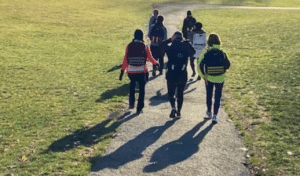
Rucking is often associated with military training, as it’s a common practice for soldiers to carry heavy loads for extended periods. However, it’s now becoming increasingly popular among civilians as a challenging and rewarding form of exercise.
One of the unique aspects of rucking is that it can be done anywhere, from urban environments to rugged wilderness trails. All you need is the right gear, including a sturdy rucking backpack and proper rucking shoes.
Rucking vs. Hiking
While rucking and hiking may seem similar at first glance, there are some key differences. Rucking is generally done with a heavier pack and at a faster pace than hiking, making it a more intense workout. Additionally, rucking focuses on building strength and endurance, while hiking is more of a leisurely activity with less emphasis on training.
The Benefits of Rucking
The benefits of rucking are numerous and wide-ranging, making it a valuable addition to any fitness routine. Some of the top benefits include:
- Improved cardiovascular fitness
- Increased muscle strength and endurance
- Enhanced mental resilience and toughness
- Potential for weight loss
- Reduced stress and anxiety
Because rucking engages multiple muscle groups and challenges your cardiovascular system, it can be an efficient and effective way to improve overall fitness. Additionally, the mental toughness required to push through the discomfort of carrying a heavy load can translate to other areas of life, such as work or personal challenges.
Getting Started with Rucking
If you’re new to rucking, it’s important to start slowly and gradually increase the weight and distance of your rucks. Additionally, proper form and technique are crucial to prevent injury and maximize benefits. Consider working with a trainer or joining a rucking community to learn more and get support.
“Rucking is a challenging yet rewarding way to improve your physical and mental fitness. With the right gear and mindset, anyone can join the ruck revolution and enjoy all the benefits it has to offer.”
Essential Rucking Gear
Rucking requires a few essential pieces of gear to ensure a safe and comfortable experience. The most important item is a high-quality rucking backpack. It should have a sturdy frame and adjustable straps to distribute the weight evenly across your back and shoulders. Look for a backpack with a capacity of 20-45 liters, depending on the weight you plan to carry.
Rucking shoes are also an essential piece of gear, as they provide the necessary support and stability for your feet and ankles. Look for shoes with a thick sole and good traction, designed for the terrain you plan to ruck on, whether it be pavement, trails, or sand.
In addition to a backpack and shoes, you may also want to consider investing in other rucking gear, such as:
| Item | Description |
|---|---|
| Weight plates | Add weight to your backpack to increase the intensity of your ruck. |
| Hydration bladder | Stay hydrated during your ruck with a hands-free hydration system. |
| Nutrition | Bring snacks or energy gels to fuel your body during longer rucks. |
| Reflective bands | Stay visible during low-light conditions or nighttime rucks. |
Investing in high-quality rucking gear will not only enhance your rucking experience but also ensure your safety and comfort.
The Benefits of Rucking
One of the most significant advantages of rucking is its ability to improve cardiovascular fitness. By carrying a weighted backpack, your body is forced to work harder, resulting in increased heart rate and oxygen intake. According to a study published in the Journal of Sports Medicine and Physical Fitness, “rucking resulted in greater caloric expenditure and HR response compared to walking at the same speed.”
Rucking also offers numerous benefits for building muscle strength. The added weight to the backpack challenges your legs, core, and upper body, leading to increased muscle activation and growth. Plus, the constant resistance provided by the backpack can improve bone density, especially in the hips and spine.
But the benefits of rucking extend beyond physical fitness. This activity can enhance mental resilience by pushing you out of your comfort zone and building mental toughness. Rucking requires focus, determination, and grit, all of which can be transferred to other areas of your life.
Furthermore, rucking has the potential for weight loss and stress reduction. Since rucking is a full-body workout, it can burn significant calories, aiding in weight loss efforts. Additionally, being outdoors and engaging in physical activity can lower stress levels and improve overall well-being.
Effective Rucking Workouts
Rucking is a highly versatile workout that can be adapted to suit any fitness level. Whether you’re a beginner or a seasoned fitness enthusiast, incorporating rucking into your routine can provide numerous benefits for your overall health and fitness. Here are some effective rucking workouts to help you get started:
Beginner-friendly Ruck
For beginners, it’s essential to start with lighter weight and shorter distances to build your endurance gradually. A 20-30 minute ruck carrying 10-20 pounds is a great way to start. Here is a sample beginner-friendly ruck:
| Duration | Weight | Distance |
|---|---|---|
| 20-30 minutes | 10-20 pounds | 1 mile |
Interval Rucking
Interval rucking is an excellent way to push yourself and increase endurance. Here’s a sample interval ruck workout:
- Ruck at a moderate pace for 5 minutes
- Sprint for 1 minute
- Repeat for a total of 30 minutes
Advanced Challenge
For those who want to take their rucking to the next level, try this advanced challenge:
| Duration | Weight | Distance |
|---|---|---|
| 60 minutes | 50 pounds | 5 miles |
Remember to start slowly and gradually increase the weight and distance as you build your endurance. Incorporating rucking workouts into your fitness routine can provide numerous benefits for your overall health and fitness. Give it a try and see the difference it can make in your workout routine.
Engaging in Rucking Events
Rucking events have become increasingly popular over the years, providing ruck enthusiasts with the opportunity to test their limits and connect with like-minded individuals. These events can range from casual group rucks to organized competitions, and they often support a charitable cause.
Participating in a rucking event can be an exciting and rewarding experience, but it’s important to prepare appropriately. Here are some tips to help you make the most of your rucking event:
- Train for the event: Make sure you’re adequately trained for the rucking event you plan to participate in. This includes building up your endurance, strength, and mental resilience. Check the event’s website for any recommended training programs or tips.
- Select the right gear: Choose a rucking backpack and shoes that are comfortable and appropriate for the terrain. Consider the weight you’ll be carrying and the weather conditions you may encounter.
- Hydrate and fuel properly: Drink plenty of water leading up to and during the event, and fuel your body with nutritious foods. Bring snacks and electrolyte drinks to keep your energy levels up during the ruck.
- Manage your pace: Pace yourself throughout the event and listen to your body. Don’t push yourself too hard too soon.
- Join a team: Consider joining a rucking team or group to make the event more enjoyable and supportive. You can also meet new people and make connections in the rucking community.
Participating in a rucking event can be a memorable and gratifying experience. Not only will you challenge yourself physically and mentally, but you’ll also have the opportunity to connect with others who share your passion for rucking. Check out upcoming rucking events in your area and start training today!
Top Rucking Tips
Looking to get the most out of your rucking experience? Check out these top rucking tips!
- Select the right weight: When selecting a weight for your ruck, choose one that challenges you but is still manageable. A good rule of thumb is to start with 10% of your body weight and gradually increase the weight over time as your fitness improves.
- Focus on form: Proper form is crucial for avoiding injury and maximizing the benefits of rucking. Keep your back straight, shoulders down and back, and engage your core throughout the workout.
- Invest in quality gear: Quality gear can make all the difference in your rucking experience. Invest in a sturdy rucking backpack that fits comfortably and distributes weight evenly across your body. Additionally, wear proper rucking shoes that offer support and traction for different terrains.
- Stay hydrated: Rucking can be a demanding workout, so it’s important to stay hydrated before, during, and after your ruck. Bring plenty of water with you and consider adding electrolyte supplements to your water to replenish lost nutrients.
- Find a rucking buddy: Rucking with a partner can help keep you motivated and make the experience more enjoyable. Consider joining a rucking community or recruiting a friend to join you on your workouts.
- Progress gradually: As with any fitness routine, it’s important to progress gradually to avoid injury and burnout. Start with shorter rucks and gradually increase the distance and weight over time as your fitness improves.
“Investing in quality gear and focusing on proper form can make all the difference in your rucking experience.”
Training for Rucking Success
Rucking requires a different kind of training than other forms of exercise, as it involves carrying a weighted backpack for extended periods of time. To prepare your body for this unique challenge, we recommend following a structured training plan that gradually increases in intensity and duration.
Here are some tips for training for rucking success:
- Start Slow: If you’re new to rucking, start slow and gradually increase your time and distance. Begin with a lightweight backpack and short distances, then gradually build up to longer distances and heavier weights.
- Incorporate Strength Training: Rucking is a full-body workout that requires strength and endurance. To prepare your body for this, incorporate strength training exercises into your training plan, including squats, lunges, push-ups, and planks.
- Progressive Overload: To continually challenge your body and build strength, gradually increase the weight of your backpack or the distance you ruck. However, it’s important to increase the weight or distance gradually to avoid injury.
- Interval Training: To improve your cardiovascular fitness and endurance, incorporate interval training into your rucking routine. This can involve alternating between periods of fast-paced rucking and slower recovery periods.
- Rest and Recovery: Like with any form of exercise, rest and recovery are crucial for preventing injury and allowing your body to adapt and improve. Incorporate rest days into your training plan and make sure to stretch and foam roll to prevent muscle soreness.
Sample Training Plan
Here is a sample one-month training plan to prepare for a 5-mile ruck with a 20-pound backpack:
| Week | Training Plan |
|---|---|
| Week 1 | Day 1: 1-mile ruck with 10-pound backpackDay 2: Rest dayDay 3: 1.5-mile ruck with 10-pound backpackDay 4: Strength trainingDay 5: 2-mile ruck with 10-pound backpackDay 6: Rest dayDay 7: 3-mile ruck with 10-pound backpack |
| Week 2 | Day 1: 2-mile ruck with 15-pound backpackDay 2: Rest dayDay 3: 2.5-mile ruck with 15-pound backpackDay 4: Strength trainingDay 5: 3-mile ruck with 15-pound backpackDay 6: Rest dayDay 7: 4-mile ruck with 15-pound backpack |
| Week 3 | Day 1: 3-mile ruck with 20-pound backpackDay 2: Rest dayDay 3: 3.5-mile ruck with 20-pound backpackDay 4: Strength trainingDay 5: 4-mile ruck with 20-pound backpackDay 6: Rest dayDay 7: 5-mile ruck with 20-pound backpack |
| Week 4 | Day 1: Rest dayDay 2: 3-mile ruck with 20-pound backpackDay 3: Strength trainingDay 4: 4-mile ruck with 20-pound backpackDay 5: Rest dayDay 6: 5-mile ruck with 20-pound backpackDay 7: Rest day |
Remember, the key to rucking success is to start slow, incorporate strength training and interval training into your routine, and allow for rest and recovery time. By following a structured training plan, you’ll be well on your way to achieving your rucking goals.
Conclusion
In conclusion, joining the rucking community can be instrumental in achieving your fitness goals. With a supportive and motivational group of like-minded individuals, you can find the inspiration and encouragement you need to stay on track with your training.
The rucking community is more than just a group of fitness enthusiasts; it’s a family that fosters a sense of belonging and camaraderie. Whether you’re a beginner or an experienced rucker, there’s always room for you to connect, learn, and grow with the community.
Join the Rucking Community Today
If you’re ready to take your rucking journey to the next level, we encourage you to join the rucking community. From online forums to local meetups and events, there are plenty of opportunities to engage with others who share your passion for rucking.
So what are you waiting for? Start exploring the rucking community today, and discover the benefits of being part of a supportive and dynamic group of individuals all working towards a common goal – achieving their best selves through rucking!
Remember, rucking is not just a fitness regimen; it’s a lifestyle. Join the rucking community and embrace the challenge, the camaraderie, and the rewards that come with this revolutionary fitness movement.
Thank you for joining us on this journey, and we look forward to seeing you out there on the rucking trail.
FAQ
What is rucking?
Rucking is a fitness activity that involves carrying a weighted backpack while walking or hiking. It challenges your strength, endurance, and mental resilience.
What gear do I need for rucking?
The essential gear for rucking includes a sturdy rucking backpack and proper rucking shoes designed for different terrains. Here is a site we created for all the best rucking gear.
What are the benefits of rucking?
Rucking offers numerous benefits, including improved cardiovascular fitness, increased muscle strength, enhanced mental resilience, potential for weight loss, and stress reduction.
How can I participate in rucking events?
Rucking events have gained popularity, and you can participate by finding notable events across the country and preparing yourself for the experience. Here is a full list of rucking events worth checking out.
What are some top tips for rucking?
We have compiled a list of top tips to optimize your rucking experience, including advice on proper form and technique, selecting the right weight for your ruck, and more.
How can I train for rucking success?
Training for rucking success involves different methods such as progressive overload and interval training. We provide a structured training plan to help you reach your rucking goals. Check out ruck.training.
Why is the rucking community important?
The rucking community provides support, connection with like-minded individuals, and the opportunity to share experiences. It’s a valuable resource to continue your fitness journey with the support of others. Check out our amazing rucking facebook group.

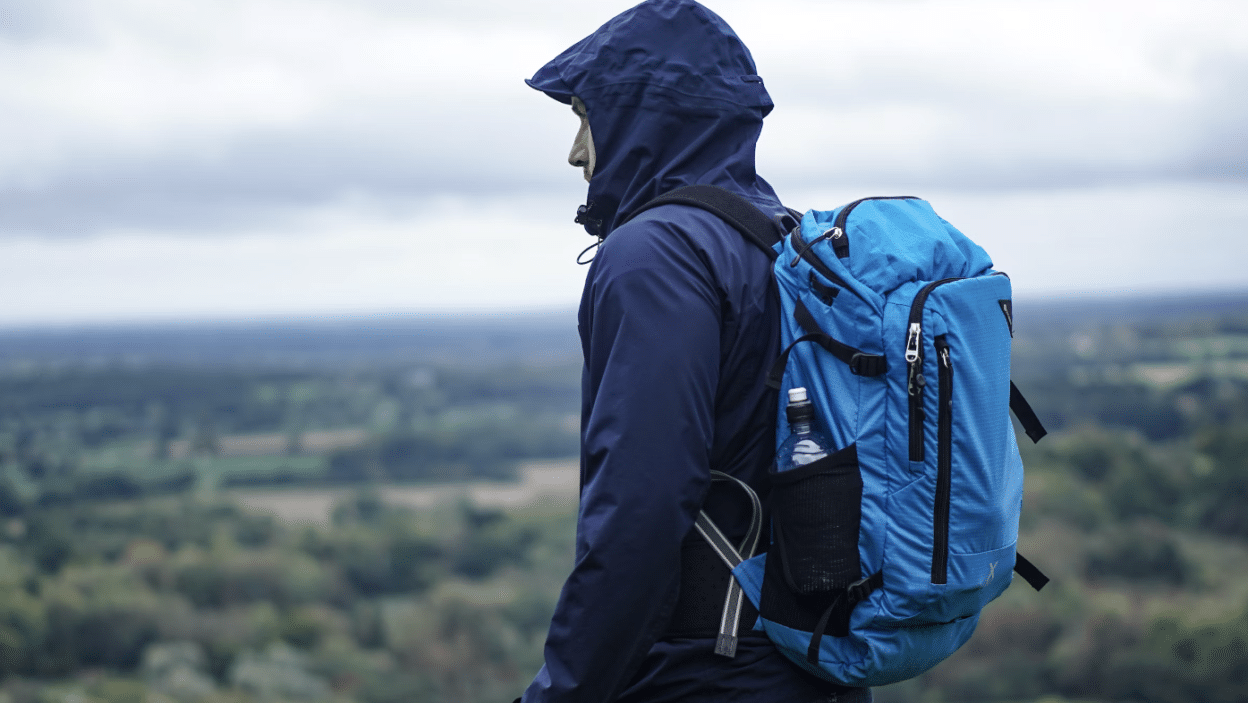
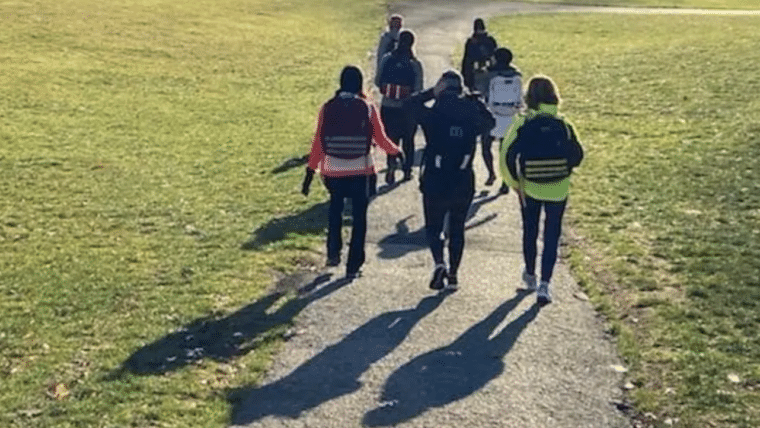
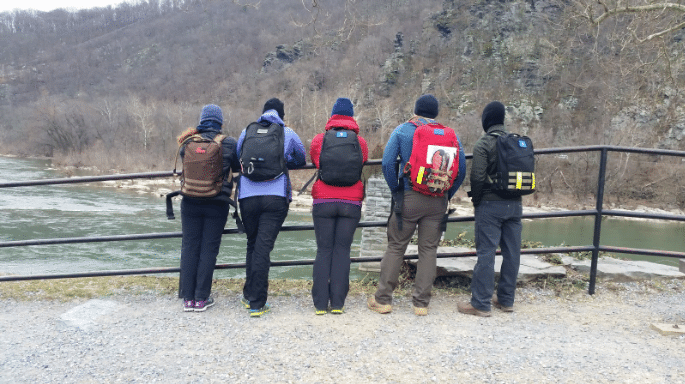

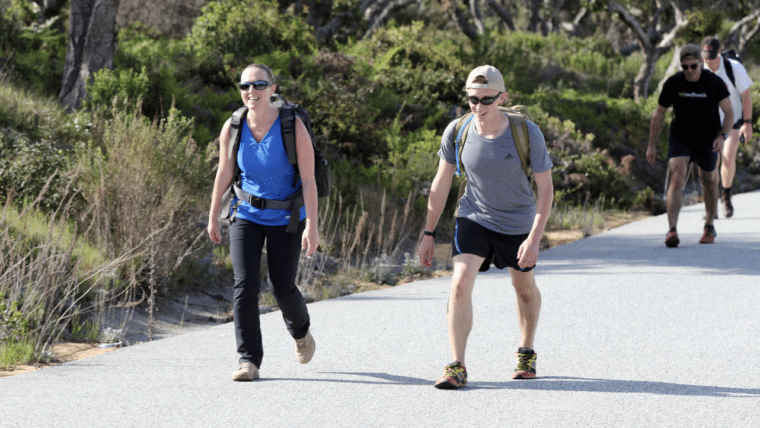


What are the Best Shoes for Rucking?
Best Rucking Backpacks List
Rucking for Weight Loss: A Comprehensive Guide
Rucking for Beginners: A Complete Guide to Getting Started
What is Rucking?
Is Rucking Better Than Running?
Best Rucking Backpacks List
How Many Calories Do I Burn Rucking?